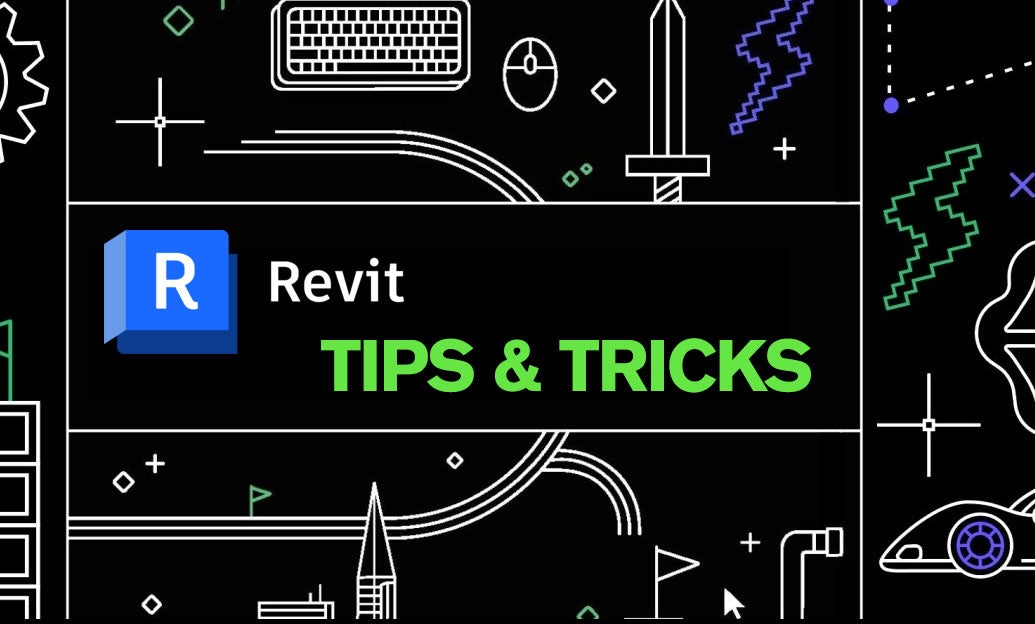Your Cart is Empty
Customer Testimonials
-
"Great customer service. The folks at Novedge were super helpful in navigating a somewhat complicated order including software upgrades and serial numbers in various stages of inactivity. They were friendly and helpful throughout the process.."
Ruben Ruckmark
"Quick & very helpful. We have been using Novedge for years and are very happy with their quick service when we need to make a purchase and excellent support resolving any issues."
Will Woodson
"Scott is the best. He reminds me about subscriptions dates, guides me in the correct direction for updates. He always responds promptly to me. He is literally the reason I continue to work with Novedge and will do so in the future."
Edward Mchugh
"Calvin Lok is “the man”. After my purchase of Sketchup 2021, he called me and provided step-by-step instructions to ease me through difficulties I was having with the setup of my new software."
Mike Borzage
Revit Tip: Mastering Revit Worksets: Essential Tips for Enhanced Collaboration and Efficiency
February 03, 2025 2 min read

Efficient collaboration is crucial in any Revit project, and understanding worksets is key to achieving this. Worksets allow multiple team members to work on the same model simultaneously by dividing the project into manageable sections. This not only enhances productivity but also ensures better organization and coordination within the project.
Here are some essential tips for mastering Revit worksets:
- Define Clear Workset Structure: Before starting the project, establish a clear workset structure that aligns with your project’s needs. Common worksets include Architectural, Structural, MEP, and Shared Elements. A well-planned structure helps in avoiding conflicts and ensures that team members know where to place their elements.
- Use Shared Levels and Grids: Place levels and grids on a separate workset, typically named “Shared Levels and Grids.” This allows all team members to reference these critical elements without causing unnecessary conflicts.
- Control Access with Permissions: Assign appropriate permissions to worksets to control who can modify them. For example, restrict access to certain worksets to prevent accidental changes to shared components like walls or columns.
- Monitor Workset Visibility: Regularly review and manage the visibility of worksets to maintain a clean and manageable workspace. Turning off unnecessary worksets can improve Revit’s performance and make it easier to focus on specific aspects of the project.
- Synchronize Worksets Frequently: Encourage team members to synchronize their worksets frequently to ensure that everyone has the latest updates. This helps in identifying and resolving conflicts early, maintaining the integrity of the model.
- Utilize Worksharing Monitor Tools: Tools like [NOVEDGE's Worksharing Monitor](https://www.novedge.com) can help track changes and monitor the status of worksets. These tools provide valuable insights into team collaboration and model health.
- Merge Everywhere Option: Use the “Merge Everywhere” option in Revit cautiously. While it can resolve conflicts by merging worksets directly, it may also overwrite important changes. Ensure that backups are in place before using this feature.
- Regularly Audit Worksets: Periodically audit your worksets to identify and eliminate unused or redundant worksets. This helps in maintaining an organized project structure and optimizes model performance.
- Educate Your Team: Ensure that all team members are well-versed in managing worksets. Conduct training sessions or share resources from [NOVEDGE](https://www.novedge.com) to enhance your team’s proficiency in using worksets effectively.
By implementing these best practices, you can leverage Revit worksets to enhance collaboration, reduce errors, and streamline your workflow. For more advanced tips and tools to optimize your Revit projects, visit NOVEDGE.
```You can find all the Revit products on the NOVEDGE web site at this page.
Also in Design News

Transforming SketchUp: 5 Essential Plugins for Engineering-Grade Precision
July 29, 2025 5 min read
Read More
Revolutionizing Design: The Power of Smart Layer Management in Modern Software
July 29, 2025 8 min read
Read MoreSubscribe
Sign up to get the latest on sales, new releases and more …



